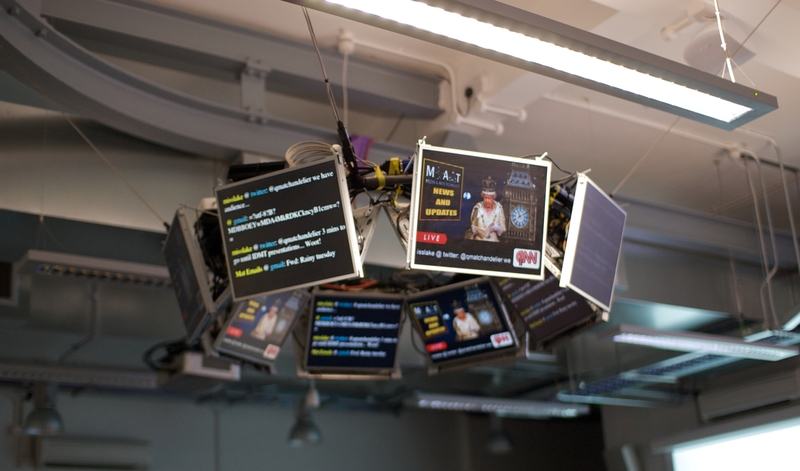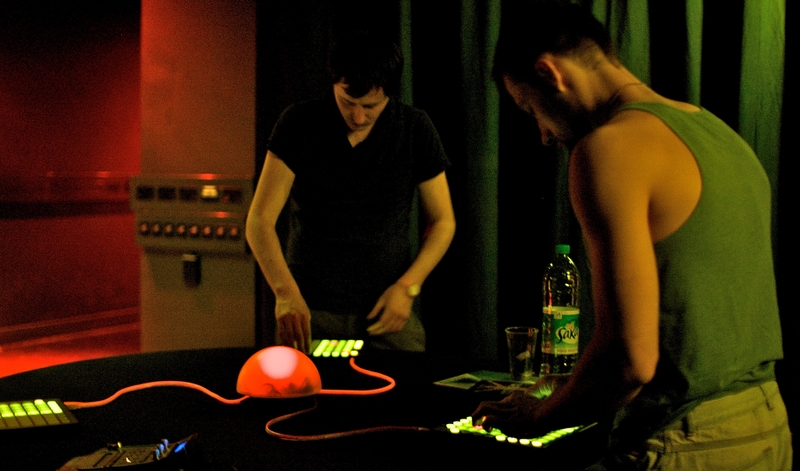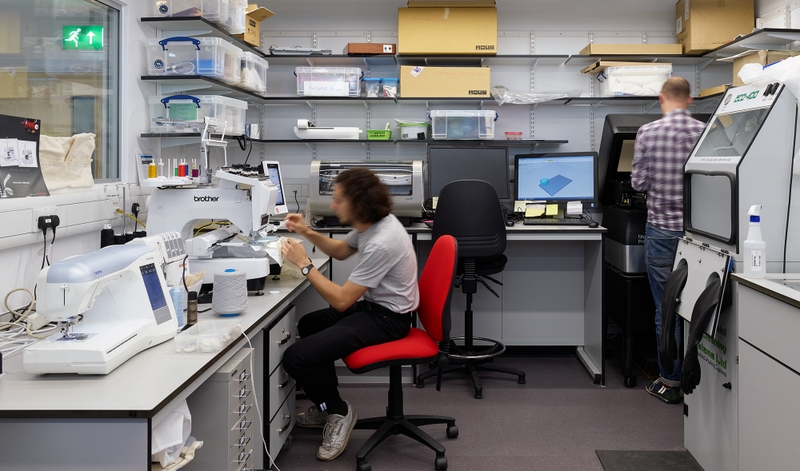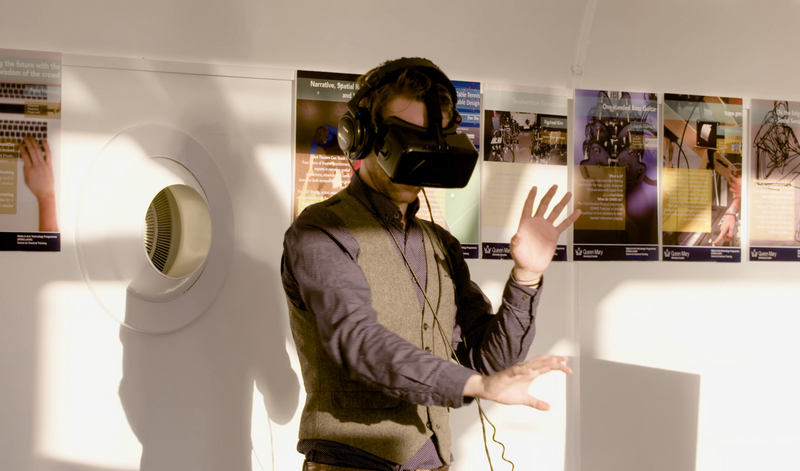Facilities

MAT Workshop
Physical computing played a big part in the Media and Arts Technology programme. The MAT Workshop was established by MAT PhD students and is now a fully functional place to develop prototypes with physical materials for staff and students across the Faculty of Science and Engineering. The workshop offers a range of manual and power tools, as well as soldering stations and electronics components. Our most used items of equipment are the two lasercutters, both a 60 Watt and a high powered 150 Watt machine. The workshop which is naturally a messy environment where wood, acrylic, textiles, electronics and other materials come together to create designs, products and innovations of the future.

MAT Lab
Our flexible community space is used for informal presentations and seminars, as well as offering a space for events and group meetings.

Performance Space
The Performance Space can be used for a variety of performance research and recording applications including motion capture, audio recording of large ensembles, interactive art installations, use as a film/ video sound stage and many more. It is one of the School’s larger spaces with a high ceiling (approx 9m x 8m) with all surfaces painted in matte black. There are hanging points and an integrated DMX lighting rig in the ceiling of this lab space for lights/ projectors/ speakers/ screens etc.

MAC Lab
The School provides 28 high specification iMacs for students to create and develop projects that include broadcast quality documentary making, audio engineering, and physical computing. The lab was the main teaching room for the Media and Arts Technology programme and now provides a quiet studious environment for learning and experimentation.

Materials Lab
Our specialised materials processing workshop enables precision prototyping and fabrication. Projects developed in house by MAT students ranged from wearable electronics, soft robotics, and interactive soft circuits. The materials lab keeps a range of consumables for experimentation, including 30 conductive textiles, liquid silicone, sample materials and conductive ink.
Equipment includes a 10 spool embroidery machine with add-on components for circular and larger-scale projects, an Objet 30 Prime stereolithography 3D printer, a FujiFilm Dimatix high precision deposition printer, a vinyl cutter, and a heat press.

MAT VR and AR Equipment
MAT students had access to a dedicated mobile VR and Augmented Reality (AR) resource including a suite of HTC Vive headsets, Oculus Rift headsets, 6 x 4k cameras and a 360 degree camera rig, Leap Motion sensors with VR mounts, headphones for independent head-tracking, Kolor video stitching software and prototyping equipment such as a Rico Theta camera, and Samsung Gear headset.
MAT students worked with industry and other QMUL departments to develop VR applications, films, and workshops, as well as to carry out a range of research in this exciting new medium.

Listening & Recording Rooms
The Listening Room is an acoustically isolated room for audio recordings and experiments where low reverberation and very low ambient noise are important. The space is equipped for high-end multi-channel audio recording and playback. A 16-speaker ambisonic system can be used for immersive surround sound research and high quality audio recording is possible using our Focusrite mic preamps and 24-channel SSL AD/DA MADI converters routed to other acoustic facilities.
The Studio Control Room is set up with a high-end Mac-based digital audio workstation running various recording software including Logic and Cubase for recording performances or post production.